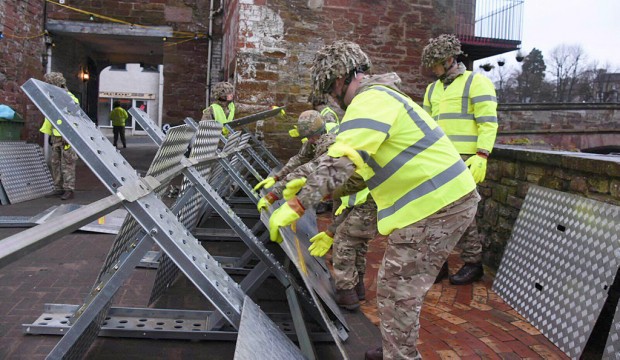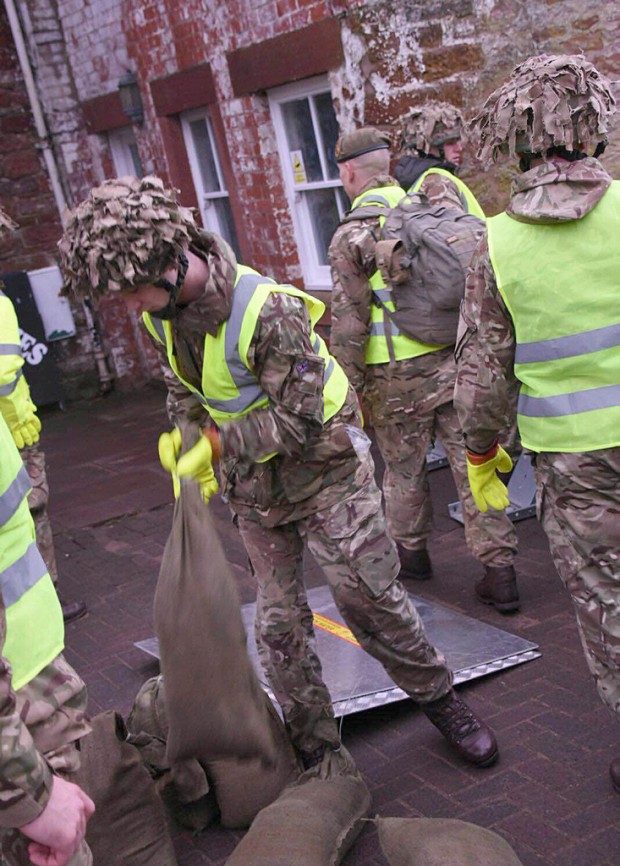British Army personnel today prepared to extend their efforts to support civilian efforts to protect flood-hit communities in northern England, led by the Department for Environment, Food and Rural Affairs.

On Christmas Day one company from 2nd Battalion Duke of Lancaster's Regiment (2LANCS), based in Weeton Barracks near Preston, deployed to help to build flood defences in Cumbria at Appleby, Braithwaite and Warwick Bridge.
This morning troops have prepared to carry out similar work alongside the Environment Agency at Whalley and Ribchester in Lancashire, after heavy overnight rains fell.
Brigadier Christopher Coles, commander of 42 Brigade which is based in the North West, met with personnel this morning as Floods Minister Rory Stewart MP visited affected sites.
Brigadier Coles said:
I am extremely proud that our soldiers have been so professional in supporting the civilian efforts to respond to these floods. The work they have done over Christmas shows their commitment and connection to the North West.
We stand ready to offer further support as needed during this extremely difficult time, and I would like to thank families and friends who have shown understanding as we carry out this task.

Defence Secretary Michael Fallon said yesterday:
Even at Christmas our Armed Forces are keeping us safe. Once again they are responding to the Cumbria floods with a level of commitment that is to be applauded.
This work follows the Army's extensive assistance to emergency response and recovery efforts in Cumbria and Lancashire after Storm Desmond earlier this month. Reconnaissance teams from 21 and 32 Regiment of 170 Engineer Group at Chilwell conducted technical assessments on at-risk and damaged bridges. Troops from 2LANCS deployed to Carlisle and Appleby to conduct search tasks in the towns, and also reached out to isolated rural areas.

Military personnel can provide a vital role in flood relief efforts alongside counterparts from local authorities, emergency services and other Government departments. Military contribution to flooding relief can include filling and distributing sandbags, erecting barriers, assisting residents, evacuating vulnerable residents, examining the condition of existing flood defences, and general duties in support of the local authorities and emergency services.
Follow us on Twitter and don’t forget to sign up for email alerts.
